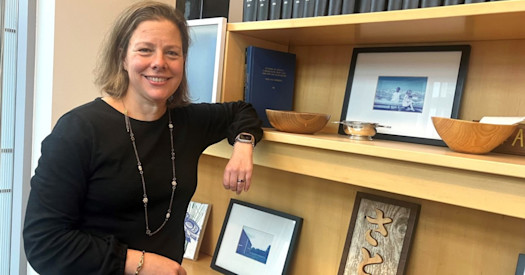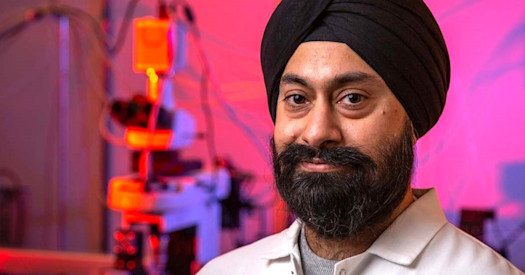
[Editor’s note: In 2022, BBI awarded a catalytic collaboration grant of $150,000 to Drs. Andrew Stergachis, Fuki Hisama, and Marianne Dubard-Gault to create a clinical genetic variant database. That work led to a five-year, $4.7 million grant from the National Human Genome Institute, awarded earlier this year, to create, supplement, and facilitate the use of the database, which is now available online. Stergachis explains its use, function, and potential for clinical application.]
What was the impetus for this database?
DR. STERGACHIS: The impetus for this database was to improve our ability to offer personalized medicine to individuals we are seeing at the UW and Fred Hutch Genetics Clinics. These two genetics clinics see over 5,000 patients annually with rare or undiagnosed conditions. Although most of these individuals will get genetic testing, for many we will only identify a Variant of Uncertain Significance (VUS), which is a genetic finding for which we are uncertain if it is causing disease or not.
There is a lot of research and clinical interest around resolving the role that individual VUSs have on our health, and we wanted our patients here at the UW and Fred Hutch to benefit from these ongoing efforts. As such, we created the Brotman Baty Institute Clinical Variant Database (BBI-CVD) as a resource to enable researchers to start resolving the VUSs that we are observing in individuals cared for at the UW and Fred Hutch. In the end, the goal is to improve the care of these patients.
Please explain how you work with patients.
DR. STERGACHIS: We send blood or saliva samples for clinical genetic testing for the majority of patients we see in the genetics clinics, often identifying individuals who are the only ones in the world to have a specific genetic variant causing that disease. For these individuals, it can be quite challenging to know how to appropriately counsel them regarding the clinical implications of their genetic variant. Currently, the standard of care is to have them return in a few years for updated interpretation, based on new information. Our goal in creating the BBI-CVD is to build a knowledge base that we can learn from to first, provide improved understanding of these VUSs. This will allow for more accurate understanding of their disease risk, clarify eligibility for potential therapeutic options, and enable a personalized medicine approach.
How frequently do you add new information and how does that help patients?
DR. STERGACHIS: We are adding new information on variants on a regular basis, and updating it as new information becomes available on these variants. We currently have data on about 3,700 variants from about 3,500 participants. I expect in a couple of years the number of participants will exceed 10,000.
What are other potential uses?
DR. STERGACHIS: We have been working with researchers both at the UW and nationally to better understand the clinical significance of individuals harboring VUSs within our database. In addition, another goal of this project is to identify patients who are well-suited for certain types of clinical trials. There currently is a lot of research exploring novel therapies for genetic conditions, but one of the limiting factors is finding patients for those clinical trials, which this database helps to address.


